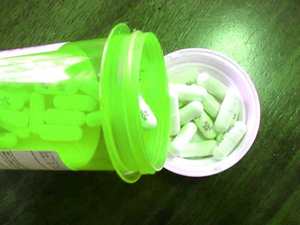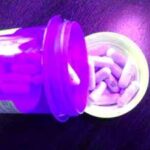There are many different classes of antibiotics each exerting a different type of inhibitory effect that specifically impacts bacteria. Bacterial cells are prokaryotic; primitive cells that differ significantly from humans’ eukaryotic cells. Antibiotic sulfa drugs work by inhibiting a metabolic pathway that is necessary for DNA synthesis.
Each article in this series covers a specific class of antibiotic and includes the following information:
- a list of the specific antibiotics that fall in the class (generic and brand names)
- mode of action
- type of infection the antibiotic class to against
- type of bacteria inhibited or killed
- pros and cons of using the class of antibiotics
The main classes of antibiotics include:
- Aminoglycosides
- Cephalosporins (a Beta-lactam)
- Macrolides
- Penicillin (a Beta-lactam)
- Quinolones (Fluoroquinolones)
- Sulfonamides
- Tetracyclines
Sulfonamides (Sulfa Drugs)
Sulfa drugs are synthetic antimicrobial agents that contain the sulfonamide group. German bacteriologist and pathologist Gerhard Domagk was awarded the 1939 Nobel Prize for Physiology or Medicine for discovering the antibacterial effects of prontosil red, a dye which contained the active component, sulfanilamide.
Some representative sulfonamides include:
- Sulfacetamide
- Sulfadimethoxine
- Sulfadoxine
- Sulfamethoxazole
- Sulfasalazine
- Sultiame
- Sumatriptan
Sulpha is an alternate spelling of the common name for sulfa drugs or sulfonamide antibiotics.
Sulfanomides Mode of Action
Antibacterial sulfonamides target a bacterial metabolic pathway as competitive inhibitors of the enzyme dihydropteroate synthetase, DHPS.Dihydropteroate synthetase activity is vital in the synthesis of folate, and folate is required for cells to make nucleic acids, such as DNA or RNA. So if DNA molecules cannot be built, the cell cannot divide, and the effect is bacteriostatic (rather than bactericidal).
Sulfa drugs do not cause the same disruption in animal cells, because our cells do not synthesize folate. Since we can’t make folate, we need to consume it, and folate is a dietary requirement.
Antimicrobial Spectrum of Sulfa Drugs
Sulfonamides have broad spectrum activity against both gram-positive and gram-negative bacteria.
Type of Infections Sulfa Antimicrobic Drugs are Used For
Sulfa drugs are used to treat some types of bacterial pneumonia, urinary tract infections, shigellosis, Nocardia infections (a type of bacterium with an unusual waxy cell wall) and specific protozoal infections.
Pros & Cons of Sulfa Drug Antibiotics
Sulfa Allergies
Allergies to sulfa drugs are common (about 3% of general population), so sulfonamides are prescribed carefully. Hypersensitivity reactions are less frequently seen in non-antibiotic sulfonamides. The most common hypersensitivity reaction to sulfa drugs are skin reactions such as rashes and hives. However, there are several types of reactions that can be life-threatening.
Bacterial Resistance
Resistance to sulfonamide antibiotics is also common, and they are frequently used in combination with trimethoprim; which blocks two steps in folic acid metabolism, and thus helps prevent the emergence of strains of bacteria resistant to sulfa drugs.
SourcesThe information in this article was obtained from a variety of sources, including the text book Foundations in Microbiology by Kathleen Park Talero (2008) and Yuri Bayarski’s article Antibiotics and Their Types, Uses and Side Effects.






